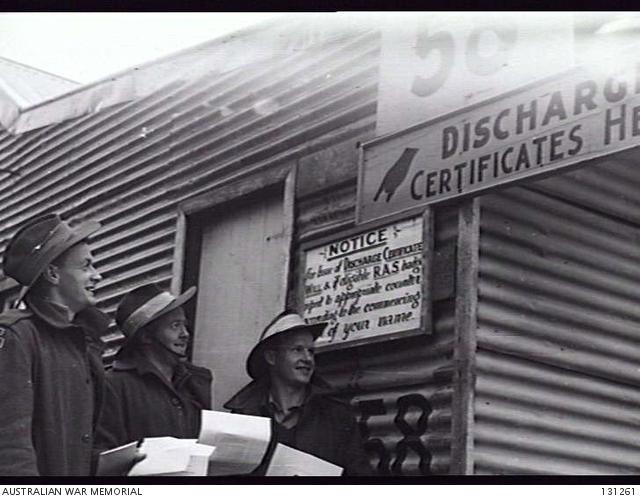“What does AMR&O 253A (1)(n) mean?”
We occasionally get asked this question by family historians researching military service during the Second World War. The abbreviation appears in Second World War personal service records on the Proceedings for Discharge form, and could have anything from an (a) to an (n) at the end.

No. 3 Military Discharge Depot, Royal Park, Victoria, 27 August 1946.
AMR&O stands for “Australian Military Regulations and Orders”. Combined, the regulations and orders are a code of conditions for the army during both peace and wartime.
Did I hear you ask “What is the difference between the regulations and orders?” Australian Military Regulations are issued by the Governor-General; orders may be issued by the Military Board or other authorised body. While regulations have the force of law behind them, orders are commands which often provide administrative detail on how regulations are to be observed.
Regulation 253 sets out the conditions under which a soldier may be discharged. The regulation has been amended more than once, but the version below is that promulgated in Statutory Rules 1943, No. 249, gazetted on 30 September 1943.
“AMR&O 253A (R.184A) (1) A soldier on war service, whether enlisted voluntarily or in pursuance of the provisions of Part IV of the DA [Defence Act] (other than a member of the Corps of Staff Cadets or the Volunteer Defence Corps), may be discharged under this regulation from the Military Forces for any of the following reasons, that is to say:
(a) For the purpose of being appointed to commissioned rank; or
(b) For the purpose of being enlisted in or appointed to or commissioned in the Royal Australian Navy or the Royal Australian Air Force or any force of any other part of His Majesty’s dominions or of any foreign power allied or associated with His Majesty in any war in which His Majesty is engaged; or
(c) For the purpose of enlisting in any expeditionary force raised or being raised for service outside the Commonwealth; or
(d) That he is medically unfit for further military service; or
(e) That he is considered unsuitable for any further military service; or
(f) That he is under the age of eighteen years; or
(g) That he has attained the age of sixty years; or
(h) To enable him to take up employment in an industry or occupation his employment in which is necessary in the interests of the defence of the Commonwealth, the more effectual prosecution of any war in which Hi Majesty is engaged or for maintaining supplies and services essential to the life of the community; or
(i) Because, by reason of his age or standard of medical fitness, he cannot be suitably posted in his present rank or grade; or
(j) At his own request on compassionate grounds; or
(k) That, by reason of numerous convictions, he is deemed to be incorrigible; or
(l) That he has, before enlistment, been convicted by a civil court for an offence involving dishonesty or physical violence; or
(m) That he has been sentenced during his service to penal servitude or imprisonment by a civil court or court-martial; or
(n) On account of demobilization.”
So a reference to AMR&O 253A (1)(n) means that the soldier was discharged because of demobilisation at the end of the war.
If you need more information or advice about your AMR&O reference, please contact the Research Centre.